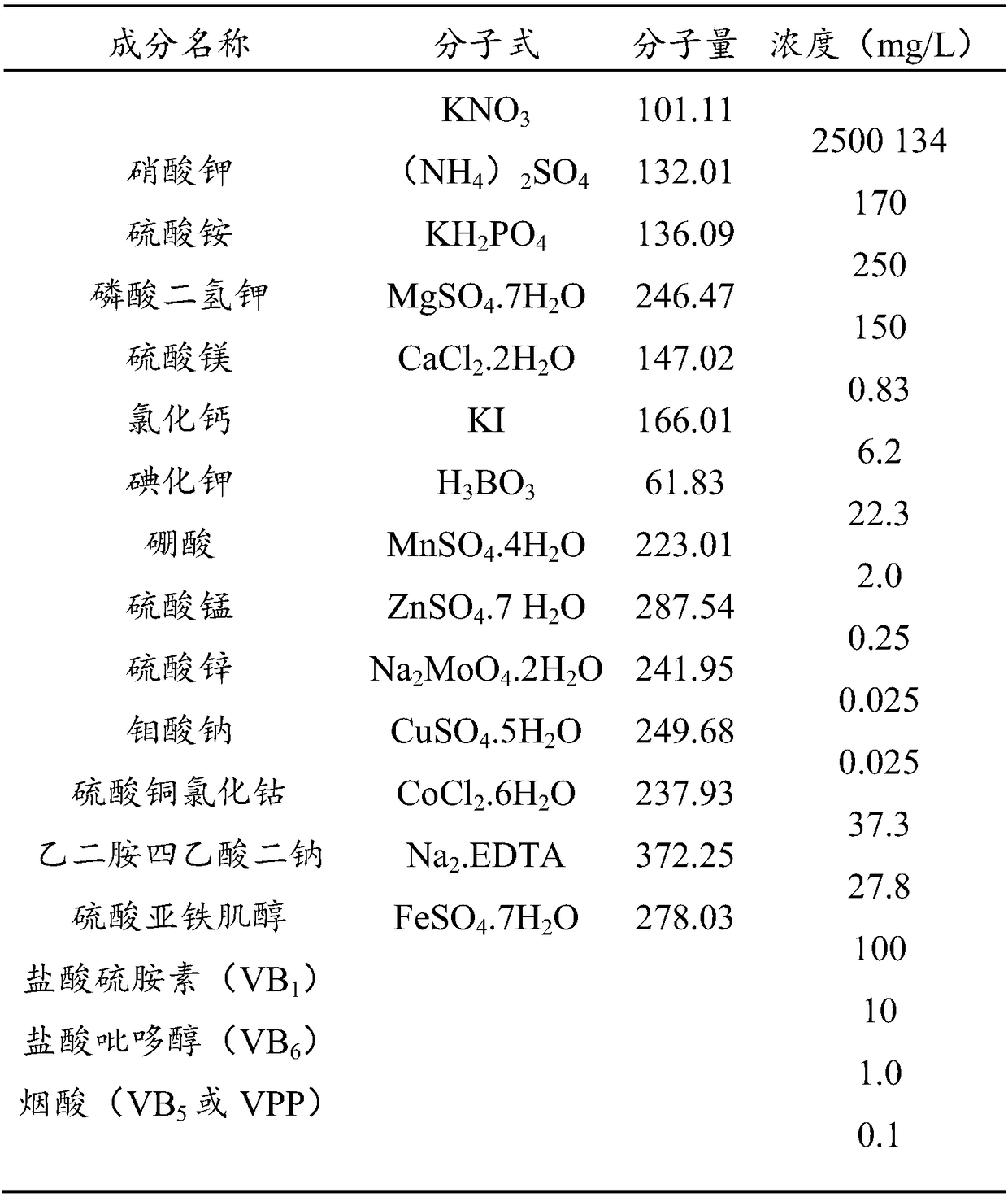Taxus chinensis cell tissue culture
A yew cell and tissue culture technology, which is applied in the field of yew cell tissue culture culture, can solve the problems of reduced active ingredient content, limited application, browning, etc., to promote rapid growth, increase effective content, and short growth time Effect
- Summary
- Abstract
- Description
- Claims
- Application Information
AI Technical Summary
Problems solved by technology
Method used
Image
Examples
Embodiment 1
[0028] The culture method of yew cell tissue of the present invention comprises the following steps:
[0029] 1. Take the seeds of natural yew, soak them in 75% alcohol solution for 30 seconds, soak them in a sodium hypochlorite solution with a mass concentration of 1% and sterilize them by shaking for 10 minutes, wash them with sterile water for 4-5 times; Soak in an aqueous solution with a concentration of 0.2mg / L-1.0mg / L for 24 hours; after soaking for 24 hours, soak and sterilize the seeds in 1% sodium hypochlorite solution for 10 minutes and wash them with sterile water 4-5 times; Peel off the seed shell and the inner film of the seed under aseptic conditions, and inoculate the peeled seed on the prepared induction medium (the medium containing salicylic acid concentration of 0.2mg / L~1.0mg / L), every Sow 4 seeds in 40 ml medium; culture at 25°C in the dark for 4-6 days, and after the seeds germinate, cultivate them into yew plants, and continue to cultivate until the heigh...
Embodiment 2
[0038] The seeds obtained in Step 3 of Example 1 were continued to be subcultured. According to the culture conditions, the culture temperature was 25° C., and the culture period was 35 days; then the callus with vigorous growth, no browning, and yellow-white characteristics was selected and inoculated into The subculture medium is periodically subcultured into one generation. After 60 generations of culture, the callus does not degenerate or brown, and then continue to light culture: the light condition is 4 hours / day, white light, and the temperature is 25°C; After 30 days of cultivation, they were collected and dried in vacuum at low temperature.
[0039] It is determined that the yield is not reduced, and the content of paclitaxel in the dry product culture can reach 15‰ of the dry weight, indicating that the yew callus prepared by the present invention has strong cytogenetic stability and strong adaptability to the external environment.
PUM
 Login to View More
Login to View More Abstract
Description
Claims
Application Information
 Login to View More
Login to View More - R&D
- Intellectual Property
- Life Sciences
- Materials
- Tech Scout
- Unparalleled Data Quality
- Higher Quality Content
- 60% Fewer Hallucinations
Browse by: Latest US Patents, China's latest patents, Technical Efficacy Thesaurus, Application Domain, Technology Topic, Popular Technical Reports.
© 2025 PatSnap. All rights reserved.Legal|Privacy policy|Modern Slavery Act Transparency Statement|Sitemap|About US| Contact US: help@patsnap.com

